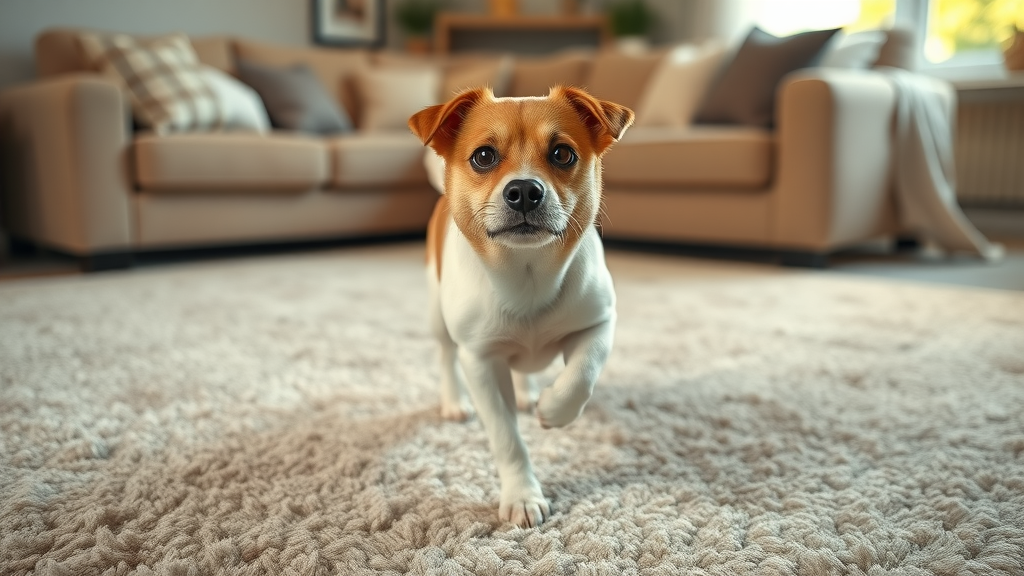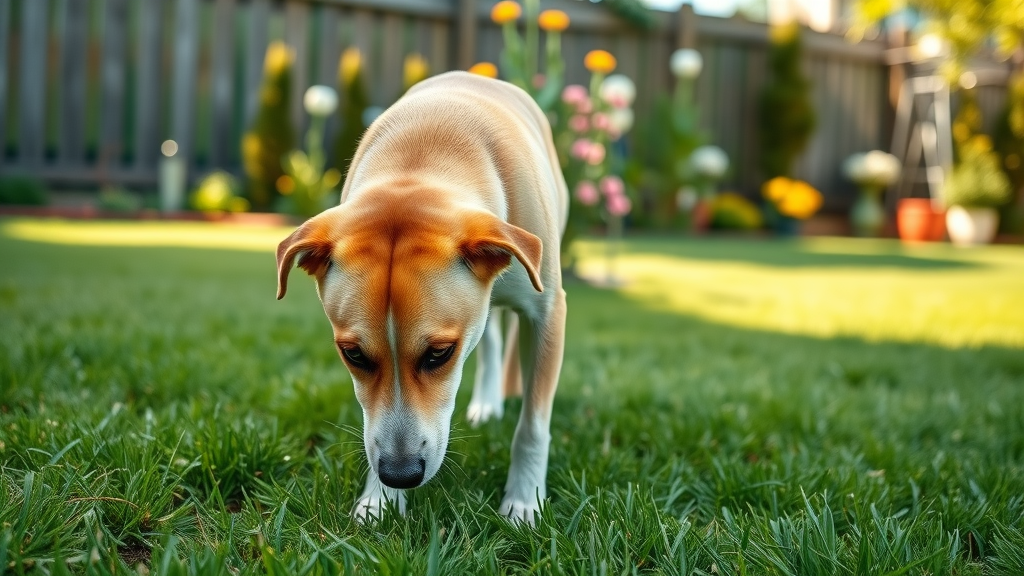- Have you ever wondered, 'why does my dog circle before lying down?' This curious behavior often stirs questions among dog lovers, challenging what we think we know about our companions. Today, we delve into this age-old question, exploring scientific insights, instincts, and modern opinions.

Understanding Why Dogs Turn and Circle Before Lying Down
Have you noticed your dog repeatedly spinning before settling down for a nap? This behavior—where dogs turn and circle before lying down —is as intriguing as it is widespread among our canine companions. While it might seem quirky or even amusing, there’s much more to it than simple oddity. Why does my dog circle before lying down? To answer that, we need to explore both instinctual drives and scientific evidence. The act of turning in circles, sometimes called a bedtime ritual , raises questions not just about your dog’s comfort, but about deep-rooted evolutionary habits passed down from their wild ancestors.
Many behaviorists and veterinarians suggest that when your dog spins before resting, it’s more than just a cute habit—it may serve real purposes. Perhaps your pup is checking their sleeping area for comfort, safety, or even marking their territory. Whether it’s the influence of ancient survival tactics or modern living comfort, understanding circling can give you a unique glimpse into your furry friend’s mind. Get ready: we’re about to dive into the reasons, the science, and the instincts behind this enduring canine custom.
Why does my dog circle before lying down? Exploring evolutionary origins
The phenomenon of dogs turning in circles before lying down is deeply connected to their evolutionary background. Before domestication, canine ancestors lived in the wild, where survival meant making the best of what nature offered. Circling helped them trample tall grass, leaves, or snow, creating a safer, more comfortable resting spot. This action also let them flatten the ground to expose any insects or small animals and to prepare a cleaner, more secure space, minimizing risks from threatening scent trails or predators. As a result, this behavior improved rest and overall survival—critical advantages in a competitive environment.
Even though today’s domesticated dogs have cozy beds and protected homes, the ritual persists. Genetics plays a significant role here, as these actions are hardwired into their instincts. Just like their wild relatives once did, your pet is applying ancient knowledge, even if the threats are long gone. The bedtime ritual becomes an intersection between history and habit, revealing that even in modern surroundings, ancestral instincts remain powerfully influential.
The instinctual reasons dogs turn and circle in circles before resting
Instinct drives much of our dogs’ behaviors, and circling before lying down is no exception. By turning in circles, your dog may be checking for comfort or creating a spot that feels just right. In the wild, this would have involved moving sticks, rocks, or potentially dangerous creatures out of the chosen sleeping area . Circling could also help regulate body heat , as flattening grass or leaves reduces drafts and provides extra insulation against the cold ground.
Modern domestic dogs still follow this routine, even if the threats and environmental challenges are far less severe. Interestingly, the number of times a dog spins can vary—some prefer a quick circle, while others seem almost meticulous. This individual variation hints at the strong influence of both habit and breed-specific traits. The circling behavior also doubles as a way for your dog to feel safe, confirming no threatening scent or danger lingers nearby. These ancient instincts are now part of your dog’s daily comfort process, blending history and health seamlessly into a seemingly simple act.
- What you'll learn in this article:
- The science behind why dogs turn before resting
- Key opinions from canine behavior experts
- How circling before lying may affect your dog's comfort and safety
- Answers to people also ask queries on dogs circling behavior
Circling Before Lying – Instinctual or Learned Behavior?

Is circling before lying a survival tactic from wild ancestry?
A key theory is that circling before lying down stems from survival instincts passed down by canine ancestors . Dogs in the wild needed to prepare their resting spots in tall grass or brush, both for comfort and safety. By trampling the grass and repeatedly turning in circles, they could clear out harmful bugs, spot a threatening scent, and choose a precise location to rest. This method doubled as a way to check the direction of the wind —a crucial skill for hiding their scent from predators and staying alert for any changes in the immediate environment.
In addition, circling sometimes served to mark their personal aspects onto the ground, which not only established territory but also told other pack or family members that a particular spot was taken. As a result, the behavior ensured both comfort and the support of the purposes explained by evolutionary needs: safety, warmth, and social signaling. In short, what seems like an odd ritual today has deep roots in the daily activity of wild dogs, with continuous relevance for domesticated dogs’ habits.
The modern perspective: habit vs. innate trait in dogs
While wild ancestry explains the foundation, modern experts question whether turning in circles before resting is purely instinctual or partly learned. For many dogs, circling has become a bedtime ritual which provides emotional reassurance—it signals the day’s activity is over, inviting relaxation. Some behaviorists now believe that this circling before lying is both a survival tactic and a habit reinforced by the comfort it provides. Over generations, domesticated dogs may have adapted the behavior for new circumstances, repurposing it for softer beds and couch cushions instead of wild ground cover.
Still, not every dog exhibits circling with the same intensity or frequency, suggesting a blend of instinct, environment, and breed-specific preference. The key takeaway is that this routine has persisted throughout canine history because it aligns with both comfort and instinctual reassurance, offering a perfect example of how ancient habits can adapt for the modern world.
| Theory | Evidence | Expert Opinion |
|---|---|---|
| Wild Ancestry | Dogs in the wild trampled grass in circles | Favored by many behaviorists |
| Comfort and Heat | Circling creates a comfortable surface | Supported by veterinarians |
| Safety Precaution | Checks area for threats before resting | Commonly referenced |
| Habitual / Boredom | Some breeds circle more than others | Not universal in all dogs |
Why Dogs Turn: Circling as a Mark of Territory and Safety
Is circling before lying down a way to mark territory?

Certain animal behaviorists propose that turning in circles is an instinctive act of claiming ownership of a chosen sleeping area . In the wild, dogs turn and sniff their surroundings before circling to deposit their own scent. This not only establishes a precise location as their own but also signals to other animals that the spot has already been claimed. This marking behavior continues with domesticated dogs , even though they may be alone or with trusted family members . Your dog may be making a private space feel uniquely theirs through scent and habit, strengthening their sense of safety and belonging.
This territorial instinct further ties into pack dynamics. By marking their resting spot, dogs may be showing social hierarchy, indirectly telling other pets or people that this is where they feel most secure. The circling act becomes much more than random movement—it’s a quietly powerful declaration of self and security, connecting your pet to the support of the purposes explained by both wild and domestic life.
Safety and vigilance: dogs turn and check their environment
Another compelling reason for dogs turning in circles before lying down is vigilance. Historically, wild dogs needed to remain alert to threats—from predators to rival packs. Circling provided an opportunity to survey the landscape, sniff for threatening scent trails, and ensure a safe atmosphere before committing to rest. This moment of checking their surroundings minimized risks and increased their chance of an undisturbed sleep.
Even today, domesticated dogs often perform this same routine, particularly in new environments or unfamiliar places. You might notice your dog is much more elaborate in their circling behavior when guests visit or when their usual routine is disrupted. Their actions may seem ritualistic, but for your pup, every turn brings a sense of reassurance. As Dr. Emily Carter, Canine Ethologist, wisely puts it:
"To us, it’s just a circle - to your dog, it’s a moment of instinctual reassurance." – Dr. Emily Carter, Canine Ethologist
Circles Before Lying: Comfort, Habit, or Health Issue?
Can 'why does my dog circle before lying down?' signal discomfort or pain?
While circling is a natural and common behavior, there are times when it might indicate discomfort or underlying health problems. If your dog is circling excessively or seems restless, it could be signaling joint pain, arthritis, or even a compulsive disorder . Dogs with sore hips or other chronic conditions might circle as they try to find a position that minimizes pain. In such cases, the number of times a dog turns before finally lying down can increase noticeably. If your pet’s circling behavior suddenly changes or is paired with whining or limping, consult a veterinarian to check for physical ailments.
Discomfort isn’t always related to pain, however. Some dogs circle because they can’t quite find the comfort they’re used to. For example, a move to a new house, changes in furniture, or even an unfamiliar smell in their bed can trigger increased spinning. When assessing your dog’s bedtime ritual , it’s important to watch for other signals—like hesitating, frequently changing spots, or refusing to lie down. Any persistent change in circling behavior should not be ignored, as it could reflect discomfort, anxiety, or even a medical condition requiring prompt attention.
When circling behavior before lying may indicate a health concern
Certain signs accompanying circling can point to health problems rather than harmless habit. Look for signs such as excessive circling without settling, difficulty lying down, audible whining, or sudden increases in the number of times your dog spins. These may all hint at issues like joint inflammation, neurological problems, or a developing compulsive disorder . Elderly dogs, especially, are prone to arthritic pain, which might manifest as repeated spinning before finally settling down uncomfortably.
Owners should also note any changes in daily routines or activity on this service —things like reduced appetite, reluctance to move, or odd posture when lying. Addressing these symptoms early and seeking a veterinarian’s guidance can make a crucial difference in your dog’s long-term comfort and quality of life. Remember, while circling is normal, changes in its frequency or the way your dog performs this bedtime ritual deserve closer attention for your pup’s safety and well-being.
- Common reasons for why dogs turn and circle before lying down:
- Making the sleeping spot comfortable
- Checking the environment for threats
- Establishing a resting ritual
- Addressing minor irritations or itching
People Also Ask: Key Questions on Dogs Circling Before Lying Down
Why does my dog circle multiple times before lying down?
- Some dogs may circle several times before lying down due to stronger instinctual drives, breed characteristics, or simply out of habit. This repetitive action can also signal the dog is trying to find a comfortable spot or is dealing with mild anxiety.

Is it normal for dogs to spin before sleeping?
- Yes, it is normal behavior among most dog breeds. Spinning, or turning in circles, before resting is commonly observed and is generally considered harmless unless accompanied by signs of distress or pain.
Addressing Concerns: When Should You Worry About Circling Before Lying?
Signs that circling before lying could indicate an issue
- Look for limping, whining, excessive circling, difficulty lying down, or new changes in behavior. Persistent restlessness may warrant a veterinary checkup to rule out joint problems or pain.

Frequently Asked Questions About Dogs Circling Before Lying Down
Do all dogs circle before lying down?
- Not all dogs do this; the intensity and frequency of circling can vary by breed, personality, and even age. Some dogs may never exhibit the behavior, while others are more consistent about it.
Can I stop my dog from circling before resting?
- While this is a natural and usually harmless behavior, if you wish to minimize it, focus on providing a comfortable and secure bed. If the behavior is excessive, consult your vet for further advice.

Final Thoughts on Why Dogs Turn and Circle Before Lying Down
"Sometimes the simplest dog behaviors are rooted in ancient instincts – what appears peculiar to us is perfectly normal to them."
- If you've ever watched your dog execute this timeless ritual, know that circling before lying down is almost always a natural, instinctive act—one that helps your pet feel safe, comfortable, and at ease.
For a deeper understanding of why dogs circle before lying down, consider exploring the following resources:
-
“Why Dogs Turn Around Before Lying Down” : This article from VCA Animal Hospitals delves into the evolutionary and instinctual reasons behind this behavior, highlighting how it relates to comfort, safety, and survival instincts. ( vcahospitals.com )
-
“Why Do Dogs Circle Before They Lie Down?” : Britannica provides insights into the ancestral behaviors of dogs, explaining how circling before lying down may have been a method for wild canines to prepare their sleeping area and ensure safety. ( britannica.com )
These resources offer comprehensive explanations that can enhance your understanding of this common canine behavior.
 Add Row
Add Row  Add
Add 




Write A Comment